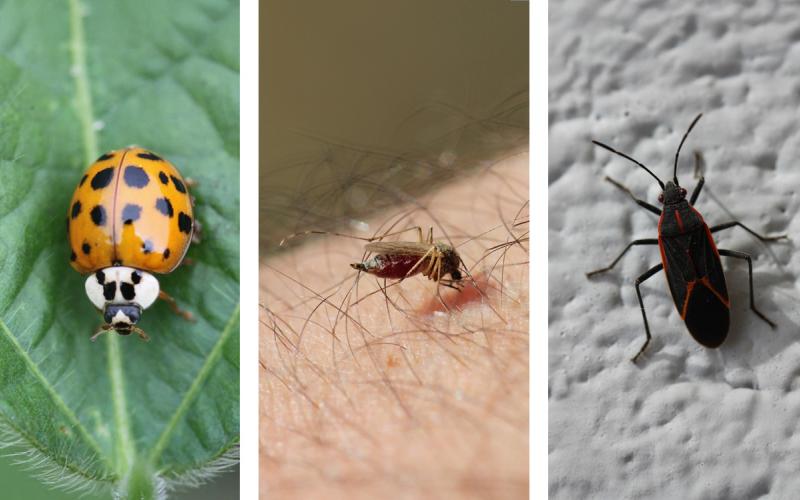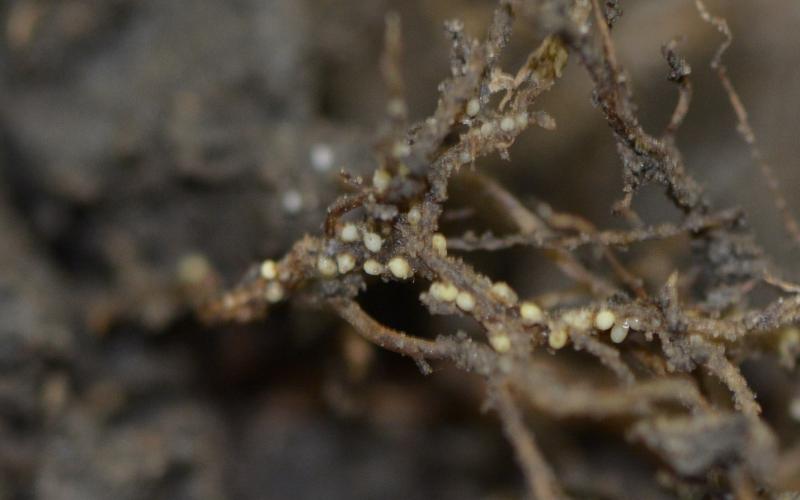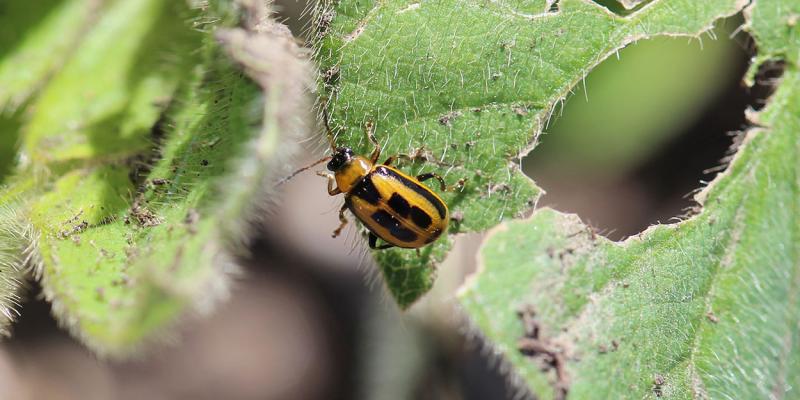
Originally Submitted: June 3, 2021
While scouting a soybean field this week, I observed extensive defoliation that was being caused by bean leaf beetles (Figure 1). Although insecticide seed treatments will reduce the threat of bean leaf beetle feeding during this time of the season, soybean fields should still be scouted. Untreated fields should be closely monitored. The relatively mild winter that we had in South Dakota will likely result in increased populations of bean leaf beetles during the 2021 growing season. During soybean emergence and early vegetative growth, bean leaf beetles can cause rapid defoliation due to the limited amount of leaf tissue available to them. Bean leaf beetles will often consume not only the leaves, but also the stem and cotyledons. For this reason, the thresholds for the overwintering population of bean leaf beetles are generally very low.
Scouting and Management Decisions
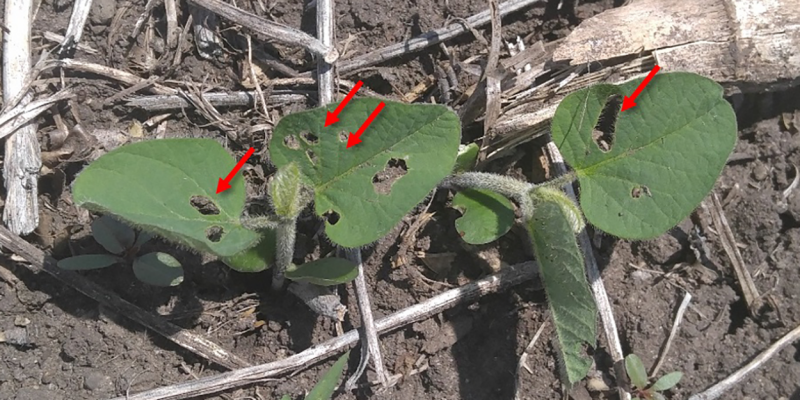
Prior to soybean flowering, we recommend treating soybean when an average of 20% defoliation is observed. However, this can be tricky to estimate when soybeans are just starting to emerge or are in the early vegetative stages. Additionally, soybean can look severely defoliated, but the percent defilation can still be relatively low.
An alternative method is to count the number of adult bean leaf beetles per plant. This can also be difficult, as bean leaf beetles will drop to the ground when the plant is disturbed or when a shadow is cast over them.

To scout for early season bean leaf beetles, examine 20 plants in five different areas of the field. If you are using the defoliation threshold, look for holes in the leaves as well as feeding on the stems or cotyledons (Figure 2). Management is recommended when an average of 20% of the leaf tissue is removed from the scouted plants (Figure 3). Remember that all leaves present must be evaluated, and that it is estimated that maximum defoliation on soybean due to bean leaf beetle feeding is likely around 50%.
If you are scouting by using visual counts of bean leaf beetle adults, look at 20 plants from five different areas throughout the field. Count all of the beetles that you observe on the 100 plants and determine the average number of beetles. Avoid disturbing the plant or casting a shadow to prevent the beetles from dropping and hiding under soil or debris.
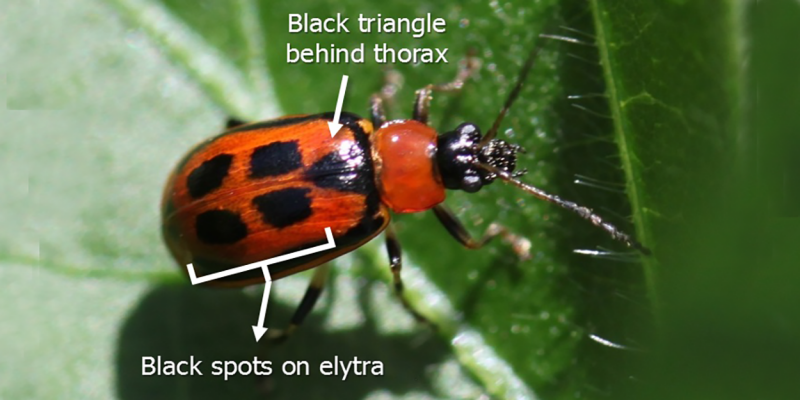
The adult bean leaf beetles can be brown, orange, yellow, red or varying shades of those colors. Adults can be identified by the black triangle present behind their thorax (middle body segment) (Figure 4). Adults will also have black heads and will generally have four spots on their hardened forewings (elytra). Based on current soybean prices, the thresholds for VC to V1 soybeans are an average of one-to-two bean leaf beetles for VC soybean and one-to-three bean leaf beetles for V1 soybean. The variability in the thresholds is based on management costs. More-expensive applications will increase the threshold, while more-economical applications will lower the threshold.
Products labeled for bean leaf beetle in South Dakota can be found in the latest South Dakota Pest Management Guide - Soybeans.

